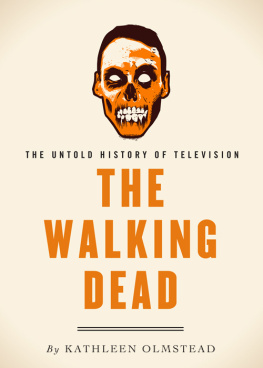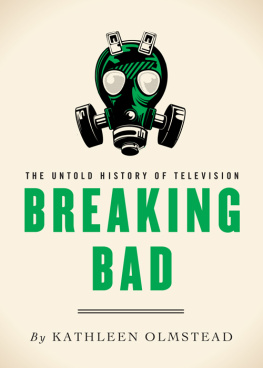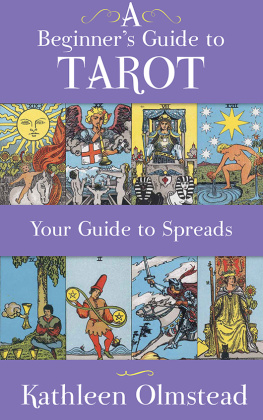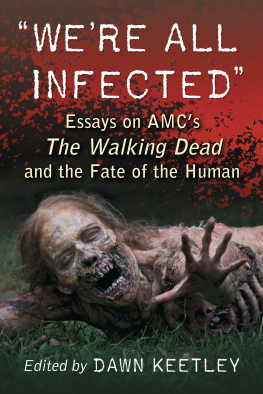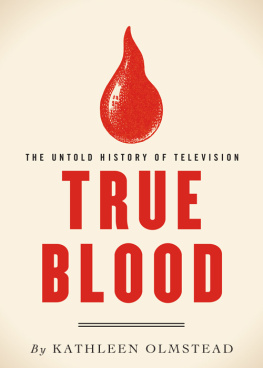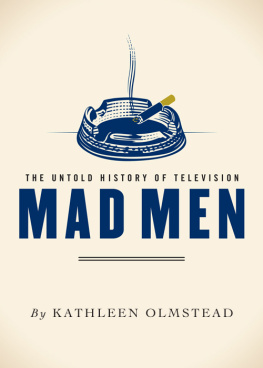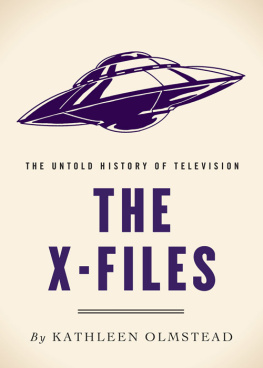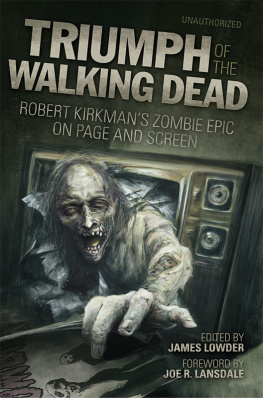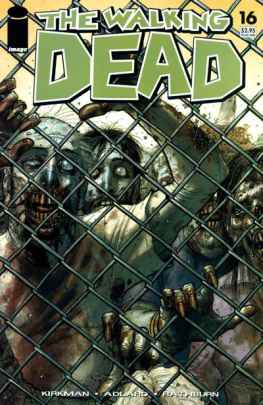Contents
The scene opens on a lonely country road as a car drives slowly toward the camera. Or, to be more precise, we should say that two scenes open on a lonely country road as a car drives slowly toward the camera. Two different works, filmed over 40 years apart, use the same imagery to begin their story about the zombie apocalypse, the time when the dead rise to eat the living. This is not a coincidence. The first, George A. Romeros 1968 movie Night of the Living Dead, is the seminal zombie film that has defined all zombie films since. This film set the basic rule we now accept about the cinematic undead: zombies have one goal, and that is to eat living human flesh.
The second zombie story that opens on a lonely country road is a television series, The Walking Dead. Before the opening credits roll, the hero of The Walking Dead, Rick Grimes, drives his police car along that country road; he passes an overturned truck and abandoned cars. This opening scene differs from the opening of the comic book that the series is based on. The series creator Frank Darabont wanted to pay homage to Romeros work. There is no music, just an eerily quiet world that the viewer, like Rick, must quickly assess. We are about to enter a world that we dont understand.
In the 40-odd years between these projects, zombie stories have grown beyond a mere sub-genre of horror. The zombie apocalypse was once the domain of late-night television, drive-in movie theatres, and independent video stores. In recent years, though, zombie-themed entertainment has hit the mainstream. Its evolved from low-budget horror films to comic books, literary fiction and even pairings with Jane Austen heroines (in a book and upcoming film). That invisible line that once separated art from genre fiction like horror has become blurred. While Romeros film defined the zombie genre, The Walking Dead is working to make its own impact on pop culture. Most zombie projects have been movies, where the characters encounter the undead and battle them for two hours. The television series, like the graphic novel it is based on, pushes beyond the limitations of film and explores life after the apocalypse. It asks, What will become of humankind when we must question who is living and who is dead?
Monster stories containing seemingly unstoppable and unnatural foes are not new. The heros journey through adversity and danger has been a part of human storytelling even before stories were written down (for a more in-depth discussion of the similar paths diverse cultures have taken in describing the heros journey, see Joseph Campbells The Hero with the Thousand Faces, among others). The ancient Greeks faced giants, Cyclopes and angry gods from the heavens or the underworld. Devils, demons, vampires, wolves, dastardly villains and unscrupulous leaders have fueled stories about ordinary people becoming heroes. The zombie apocalypse offers a variation on the heros journey but goes a step further: it entails the destruction of society and questions whether or not that society can be rebuilt. By examining what happens when civilization comes to a crashing haltin this instance because the dead have risen and are eating the living, which is a dramatic step, certainlywe are left to decide what it means to be a survivor in this world. How do we define living when surrounded by so much death, or the undead as the case may be? Other works have touched on this topic: I Am Legend, the basis for Omega Man and the 2007 film version I Am Legend, and even the novel Monkey Planet and the Planet of the Apes film series it inspired, to name only a few in a long list of apocalyptic entertainment, all describe the destruction of one society and the establishment of another. The Walking Dead takes this premise even further by delving into what happens when humans and zombies co-exist and when the survival of one means the destruction of the other.
The Walking Dead opens with Rick Grimes, a police officer in a small town in Georgia, waking up from a coma in the hospital well after he was shot in the line of duty. He is alone, the machines around him are silent, and the wall clock is stopped at 2:17. Rick, weak and disoriented, struggles out of bed and down the hospital corridor. The overhead lights flicker as Rick looks on in horror. He observes evidence of a horrendous struggle, and there are no living people in sight. He finds doors chained shut and painted with the words, Do Not Open. Dead Inside. This is Ricks awakening to a world that he doesnt recognize. He slowly comes to realize that the world he knows and understands has ended. The starting point for The Walking Deadfeels familiar because it is familiarbooks and movies often use the moment after the apocalypse as a starting point.
Pop culture zombies as we know them today really began with George A. Romero, who is often referred to as the Godfather of zombie movies. Zombies existed before Romero, but they were very different creatures. The term zombie has its roots in Haiti and with the descendants of West African slaves. According to the legends within this culture, a zombie is a person who was raised from the dead and remains under the spell of a voodoo master to work as a slave. North American audiences were introduced to this concept of the zombie in 1929 through William Seabrooks novel, The Magic Island. Other stories soon followed. In 1932, Bela Lugosi starred in White Zombie, noted as the first zombie film (and the nominal inspiration for Rob Zombies heavy-metal band of the same name). A handful of other zombie films followed, most notably the 1943 movie I Walked with a Zombie, produced by Val Lewton and directed by Jacques Tourneur.
Authors published serious, scholarly discussions of zombies as well. In the 1930s, Zora Neale Hurston, a writer best known for her novel Their Eyes Were Watching God, published a non-fiction book, Tell My Horse, that examined voodoo and zombie culture in Haiti. Her book contains purported accounts of zombiespeople who had supposedly died and been buried years ago but who were seen working in servitude. Perhaps the best-known writer who explored pre-Romero zombie culture is Wade Davis. His book, The Serpent and the Rainbow, adapted into the 1988 Wes Craven film of the same name, suggested pharmaceutical explanations for Haitian zombies: he claimed that narcotics can cause people to resemble the walking dead. It should be noted that Cravens film took a less scholarly approach to the subject. However, in the modern context, there is no simple explanation for the zombie. Research into the modern zombie is taking place: Brendan Riley, an Associate Professor of English at Columbia University, teaches a course on Zombies in Popular Media, and Matt Mogk, founder of the Zombie Research Society, opens the discussion of a possible zombie apocalypse to include topics of disease control, city populations, over-crowding, and technology. In fact, these modern zombies resemble the Haitian version only in that they are both considered the walking dead. The zombies in George A. Romeros version, however, are decidedly more sinister.
George A. Romero, who was born in New York in 1940, grew up loving movies, and not just horror pictures. One film in particular that influenced him was The Tales of Hoffman, Michael Powell and Emeric Pressburgers 1951 adaptation of Jacques Offenbachs opera. Romero claims that Hoffman

